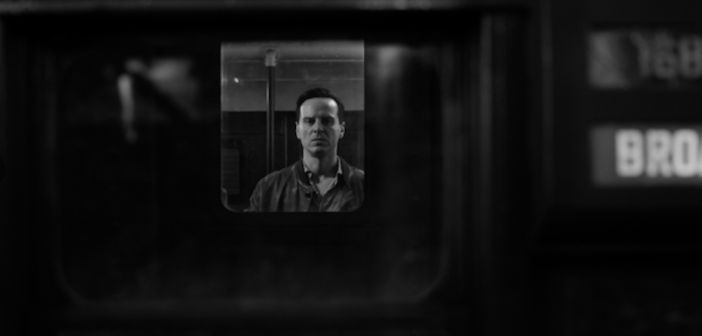Director and photographer Paul Joyce, recalls his meetings with Patricia Highsmith and reviews Ripley on Netflix.
I have to declare an interest when talking about the new and superb adaptation of Ripley by Patricia Highsmith, currently unwinding on Netflix, for I met and got to know her reasonably well. So this is my part of the Ripley-Highsmith tale. In 1977, the German director Wim Wenders undertook one of the earliest attempts at incarnating arguably Patricia Highsmith’s most famous of characters, the shape-shifting, inchoate, anti-hero, Tom Ripley. In a bizarre act of casting, Wenders chose Dennis Hopper to play the lead, alongside his great German counterpart, Bruno Ganz. The result was an unusual collision of styles (some unkind souls might even say even a mishmash) and combined the least interesting aspects of the triumvirate – Highsmith, Wenders and Hopper – in a garishly photographed and confusingly resolved narrative. If ever a film could be described as the proverbial curate’s egg, this was it.
So, in 1989, when Channel 4 proposed a film about Wenders, the year the Berlin wall came down, my company Lucida Productions accepted the commission quite willingly, being an admirer of his, and especially of Kings of the Road and Wings of Desire. Also, I had known Dennis Hopper personally for a decade or more and jumped at the chance of seeing him again. But one of the real hooks of the project for me was the chance to meet the reclusive Patricia Highsmith who had agreed, quite unusually, to come out of her hibernation in her Swiss chalet and undertake the trip to London.
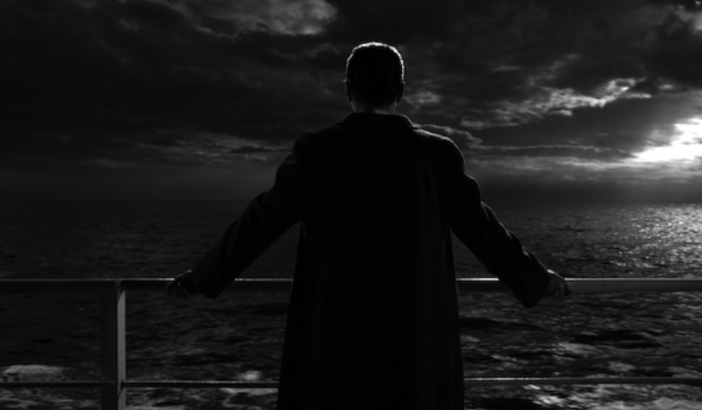
Some of the hugely talented, the rich and the famous, disappoint when you get to meet them, and others shine. Well, unfortunately Pat was decidedly one of the former. She was a writer with an unerring ability to penetrate the psychology of a vast gamut of different characters; who could give, by means of the most subtle of nuances, a hint of malice and intent without spelling it out in capital letters. Indeed, her very first book Strangers on a Train was pounced on for filming by none other than the great Alfred Hitchcock. What stories she could surely tell! Well, actually, no.
In conversation she was one of the worst storytellers I have ever met: halting, faltering, lapsing, pausing, the very antithesis of her greatest prose. Later I came to realise that this was, at least in my opinion, due to a crippling shyness. And beyond this, my conclusion as to the reason for this had to do with her suppressed sexuality, mixed with her doubt about her own personal attractiveness (and charm, or lack of it). But underneath this dense carapace of acquired armour, I also realised – rather too late in personal terms – that here was a truly caring person who desperately wanted to reach out and touch those of a similar spirit. Which is all to say that her contribution to our film stopped about one train station short of a disaster.
All this being said, her influence on modern thriller fiction, and especially on contemporary heroes such as the mysterious Ripley, is too substantial to be denied. He has turned up in many director’s hands since Wenders, good, bad and downright ugly, but here we have one that repays close examination.
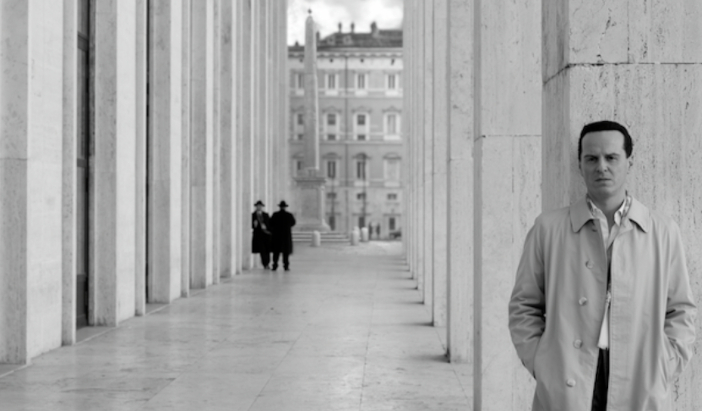
My own career as a director in television stumbled to a halt on the very axis which drives this series towards a potentially classic status: that of the possibility of an auteur on the small screen. My attempt to demonstrate this in a four-part Dr Who series in the 80s, Warriors Gate, meant I was effectively banned from the BBC thereafter, for daring to challenge the prevailing power structure of the writer/producer duality.
But with Ripley, the writer-director Steven Zaillian does the unthinkable and unmentionable, he shoots in high contrast black and white and stretches his drama long, and some might say thinly, over a total of eight episodes. But although the series has the feel of a younger generation in terms of its directorial emphases, Zaillian is technically an old man, probably in Shakespearean terms in stage six of the seven ages of man: the lean and slipper’d pantaloon, with spectacles on nose and pouch on side; yes, he is indeed 71 years young but with an impressive and substantial track record behind him: an Oscar for the screenplay of Schindler’s List and a successful collaboration with Martin Scorsese in Gangs of New York, amongst much else. This surely allowed him to basically dictate his terms to Netflix, which included engaging a genius of a lighting cameraman, Robert Elswit, who lit the masterpiece, There Will be Blood. Indeed, Ripley runs the risk of the camerawork overtaking the content and this is an ongoing near-run thing.
But just as Citizen Kane in anyone else’s hands but Orson Welles would have first and foremost been praised for its cinematography, as indeed might Charles Laughton’s only great stab at directing, The Night of the Lonely Hunter, the intense collaboration of director and cameraman in the case of Ripley pays multiple dividends, even on the smaller screen. It invokes the Italian milieu of Rome in the 60s, of La Dolce Vita, Visconti and Fellini, but not curiously the one director who experimented seriously with documentary style shooting- Roberto Rossellini. whose Rome Open City was shot in grainy black and white. Zaillian etches everything in exquisite detail, wet streets, rain falling on a terrace, pens and cigarette lighters all dance to his sombre tune. This series would look even more spectacular projected onto a large screen.
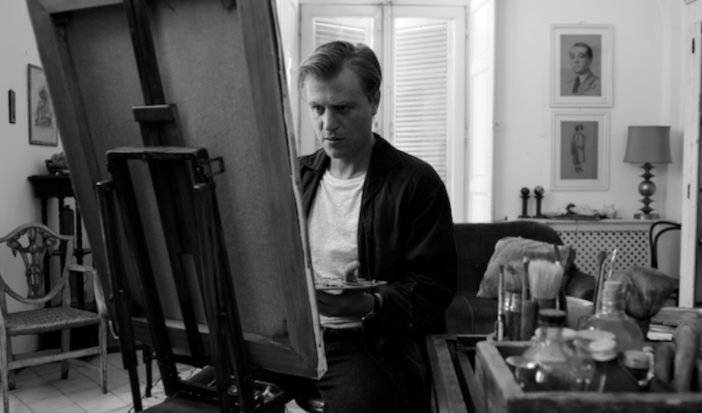
Interestingly, Zaillian’s work has split opinion right down the middle, with a rave from The New York Times and a thumbs pointed firmly earthwards from The New Statesman. Both draw comparisons with previous versions, with the latter much in favour of Anthony Minghella’s The Talented Mr Ripley, and being much more impressed with the colourful sun-drenched scenes than the rain soaked black and white ones.
One question worth asking of this latest effort as well as the best of the previous ones, is what on earth is the attraction of Ripley, almost always portrayed as a blank canvas, to both actors and directors? I think it is precisely for that very reason, that Ripley can be anything or anyone to whoever is contemplating him, and this metaphor of the blank canvas is cleverly taken up by Zaillian, making the subject of Ripley’s first murder, Dickie (Johnny Flynn), an amateur painter. Ripley is not Ripley in anyone and everyone, the great difference is that when he acts, he does so decisively without pity, regret or concern other than an obsession with clearing up any mess he may inadvertently leave behind. If anyone wants to learn how to lie, cheat, steal, seduce and ultimately kill, Highsmith’s novel can provide a comprehensive training manual for the uninitiated.
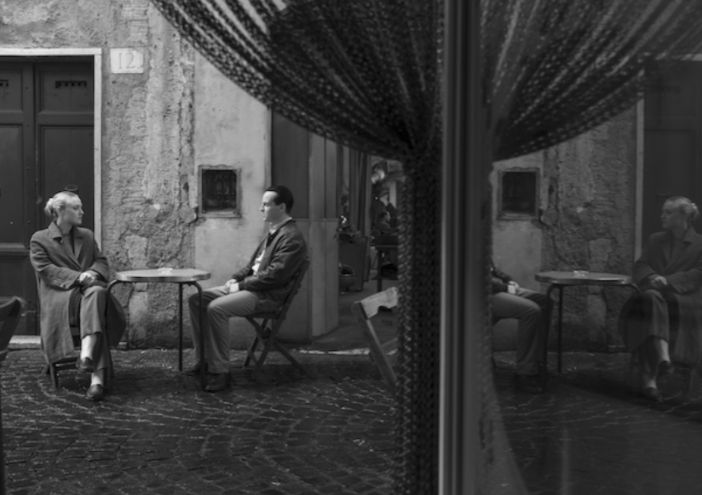
Most of you literature and film buffs will be familiar with the story, so I intended just to concentrate on elements of the series which seem to me to bend and occasionally break rules to considerable effect. To begin with, during the first two episodes at least nothing really happens, and that is for approaching two hours screen time. But the almost hypnotic engagement that the cinematography engenders allows us to take time with the characters as they slowly reveal more about themselves. Interestingly, Zaillian does not cast 20 or even 30-year-olds in the main parts, as imagined at least by Highsmith in her original novel. Instead, he opts for Andrew Scott (Ripley) at 47 and Dickie (Johnny Flynn) at 41. They are in fact middle-aged, but as portrayed by Scott and Flynn appear younger, but at the same time, almost ageless. This gives an additional twist to the strange ambience in which the drama takes place. Characters take much longer to frame their thoughts, to react and to initiate actions. It is as if they are somehow under water, and it is water which is the most intrusive element in this version (as opposed to sunlight in Minghella’s). Right up to the point of the first murder which occurs on top of, and within water. In Zaillian’s world, the streets are always wet and his characters frequently find themselves in baths, seas or simply the victims of relentless rain clouds.
All in all, this is very clever stuff, and not just from the director, but the writer as well. It is an object lesson in how to balance form and content and to reference parallel elements obliquely and very cleverly. Caravaggio is mentioned and his work shown to us quite frequently. Why, one wonders? Simple. Caravaggio is a painter who became a murderer; Tom Ripley is a murderer who became a painter.
Ripley is currently available on Netflix in the UK. Photography courtesy of Netflix (c) 2024.

